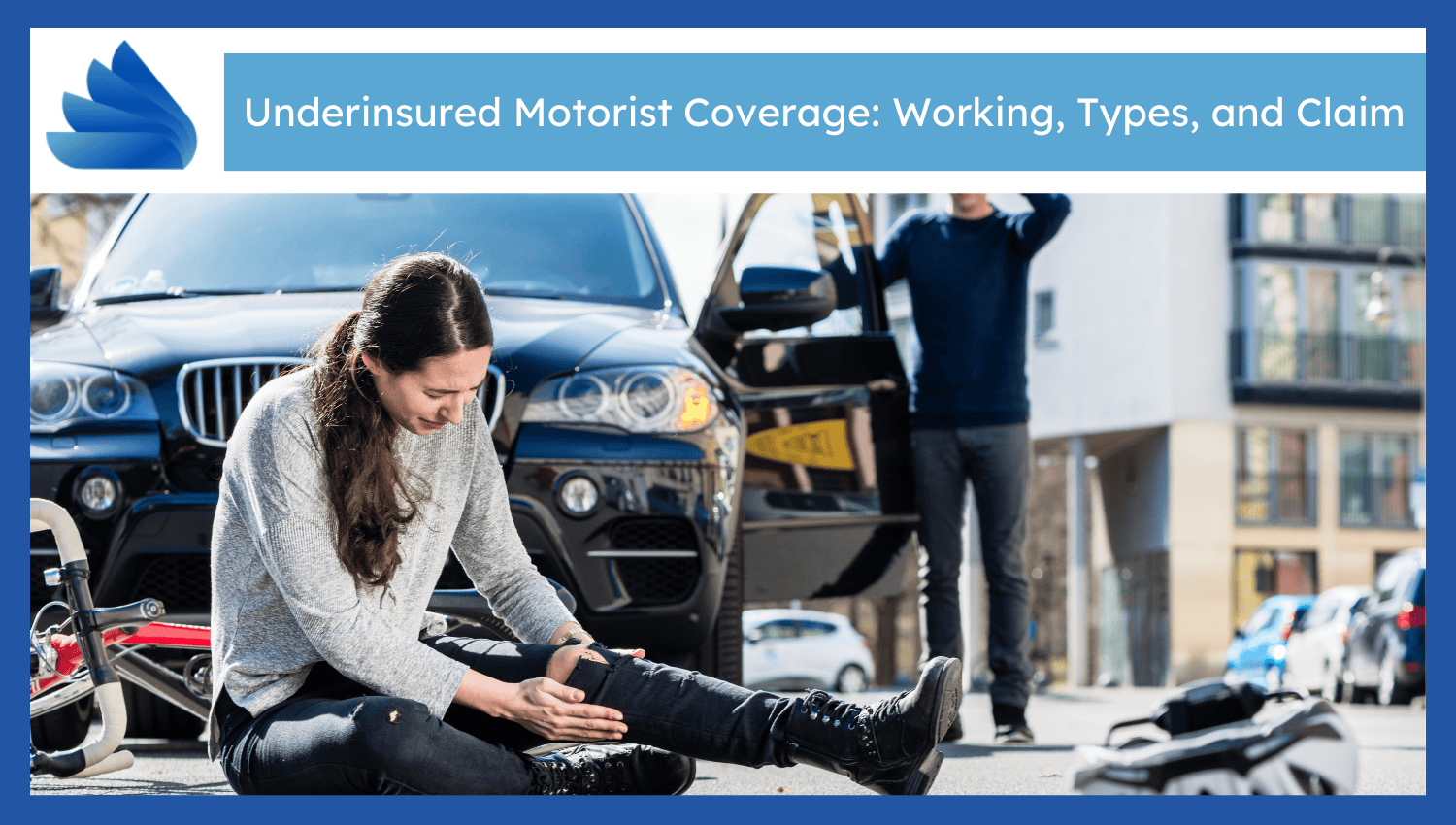
Underinsured Motorist Coverage: Working, Types, and Claim
Underinsured Motorist (UIM) Coverage comes into effect when the other driver does not have enough insurance to compensate for your losses. Your insurer pays the gap between their limit set and your actual costs.
UIM covers accidents related to bodily injury and even property destruction in case of insufficient insurance coverage by the other motorist in certain states. Underinsurance is defined by the state.
Uninsured Motorist (UM) Coverage is applicable in the event the other party is uninsured. UIM comes into play in a situation whereby you have the driver covered by insurance and yet it fails to cover all your damages.
As the 2022 report by the Insurance Research Council reveals, around 14 percent of drivers in the United States are uninsured, which makes having UIM coverage essential.
How Does Underinsured Motorist Coverage Work?
Here are the seven step working of Underinsured Motorist Coverage:- After an Accident: Immediately after a car accident with an underinsured person, obtain insurance information and snap photos of the accident site. Call the police and notify your insurance company to start your claim.
- Determining Fault: Fault is determined by analysing causes of the accident. The insurance companies and the police records speak out on liability preceding the commencement of your underinsured motorist coverage.
- Payout Process: Your insurer reimburses the other driver insurance limit minus what you pay out-of-pocket- up to the limits of your policy. They assess your medical expenses, repair, and lost earnings prior to payment.
- Other Coverage Co-ordination: Underinsured motorist insurance goes together with Collision, medical payment or health insurance. Collision protection covers your cars and medical payments cover injuries, underinsured pays when the other driver's insurance is insufficient.
- Coverage Limits: Your policy reflects per person and per accident limits. In another example, 50 000 dollars per head and 100 000 dollars per accident implies that a person who suffers a loss can receive only 50 000 dollars, but no more than a 100 000 dollars overall.
- Deductible Considerations: Typically, there are no deductibles in underinsured motorist claims as in the case of collision claims. This implies that you receive the entire amount you are eligible to receive.
- State-Specific Rules: The underinsured motorist claims vary in each of the different states as to whether coverage is needed, whether policy limits are stackable and how the payments are made.
What Does Underinsured Motorist Coverage Include?
Here are the four expenses Underinsured Motorist Coverage include:- Medical expenses: Underinsured Motorist Coverage covers hospital bills, surgery, doctor visits, and medications that arise in case of injuries incurred by an underinsured driver. It aids in paying out emergency costs and long-term medical care that could not be paid by the insurance of the at-fault driver.
- Lost wages: This insurance reimburses lost income as a result of recovery time after suffering injury in an accident with an underinsured motorist. It also compensates incidental workdays or diminished income when injuries do not permit routine working.
- Suffering and pain: The UIM policies usually cover both physical pain and emotional distress as a result of the accident. It addresses mental suffering, distress, and impaired quality of life associated with an injury caused by an underinsured driver.
- Cost of rehabilitation and therapy: These cover physical therapy, occupational therapy and rehabilitation services in order to resume movement and strength. It assists with post-hospital discharge costs that the underinsured driver policy cannot settle completely.
What are the Types of Underinsured Motorist Coverage?
Here are the two types of Underinsured Motorist Coverage:- Bodily Injury (UIMBI): Bodily Injury Underinsured Motorist Coverage covers injuries that you and your passengers suffer in an accident during which the other driver does not carry sufficient medical insurance to cover injuries.
- Communities Aware (UIMPD): Property Damage Underinsured Motorist coverage insures the repair or replacement of your car and other personal property that were destroyed by an underinsured driver. It covers expenses beyond those covered by the property damage insurance of the at-fault driver.
How to File a UIM Claim?
Here are the four steps to claim Underinsured Motorist Coverage:- Immediate Notification: Call your insurance company immediately after being in an accident involving an underinsured motorist. Initial notification begins the claims process early and can prevent delays in receiving your coverage benefits.
- Accident Documentation: Supply your insurer with all the accident details like police reports and photos. Precise documentation aids your argument and assists in establishing fault and damages in an uninsured motorist suit.
- Proof of Loss: Give your insurer medical bills, vehicle repair estimates, and receipts. These records demonstrate your monetary losses and support the amount you are claiming as compensation to your underinsured motorist cover.
- Insurer Cooperation: Give clear answers to questions by insurers and supply additional information when requested. Teamwork can make your claim run smoothly and has the potential to lead to faster payment.
Who Should Consider Underinsured Motorist Coverage?
Here are the three major groups need Underinsured Motorist Coverage:- Drivers in states with high rates of underinsured drivers: Underinsured motorist coverage helps drivers in areas where more than 15 percent of drivers are underinsured. This coverage covers against losses in case the insurance of the at-fault driver fails to cover all the damages.
- No effective health insurance: Underinsured motorist coverage enables drivers lacking in comprehensive health insurance to meet their medical costs in the event of an accident. The coverage assists in shoring up holes in healthcare expenses that are not covered by health plans.
- Travel in risky zones: Underinsured motorist coverage is necessary when using areas that have frequent traffic accidents or high uninsured rates. Such places raise the risk of collision with drivers who do not have enough insurance.

